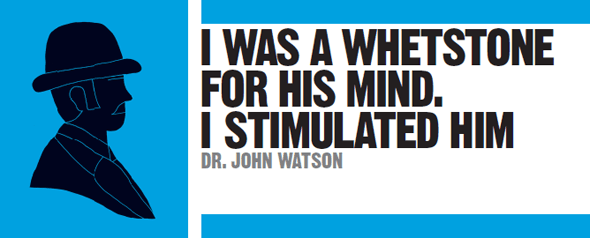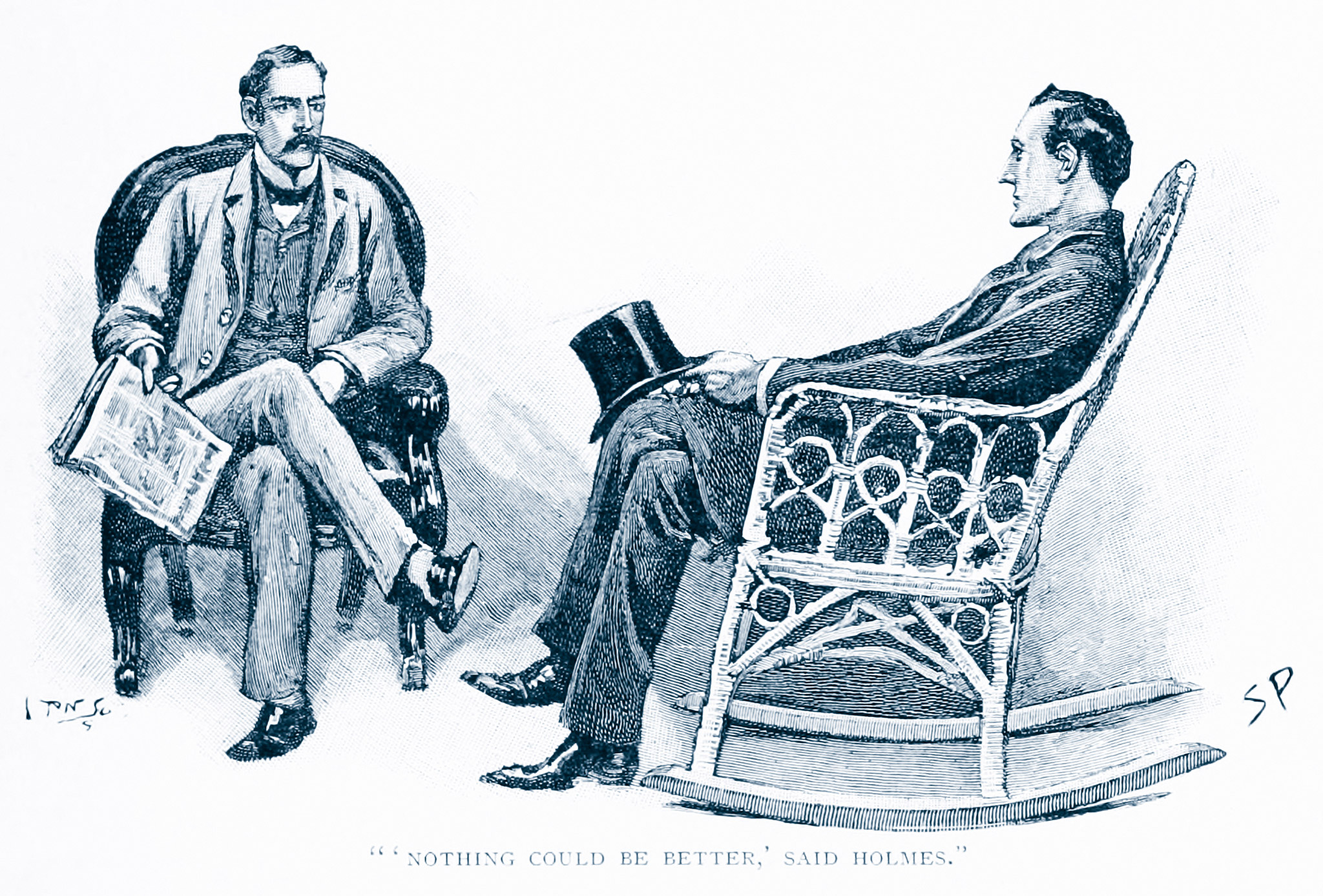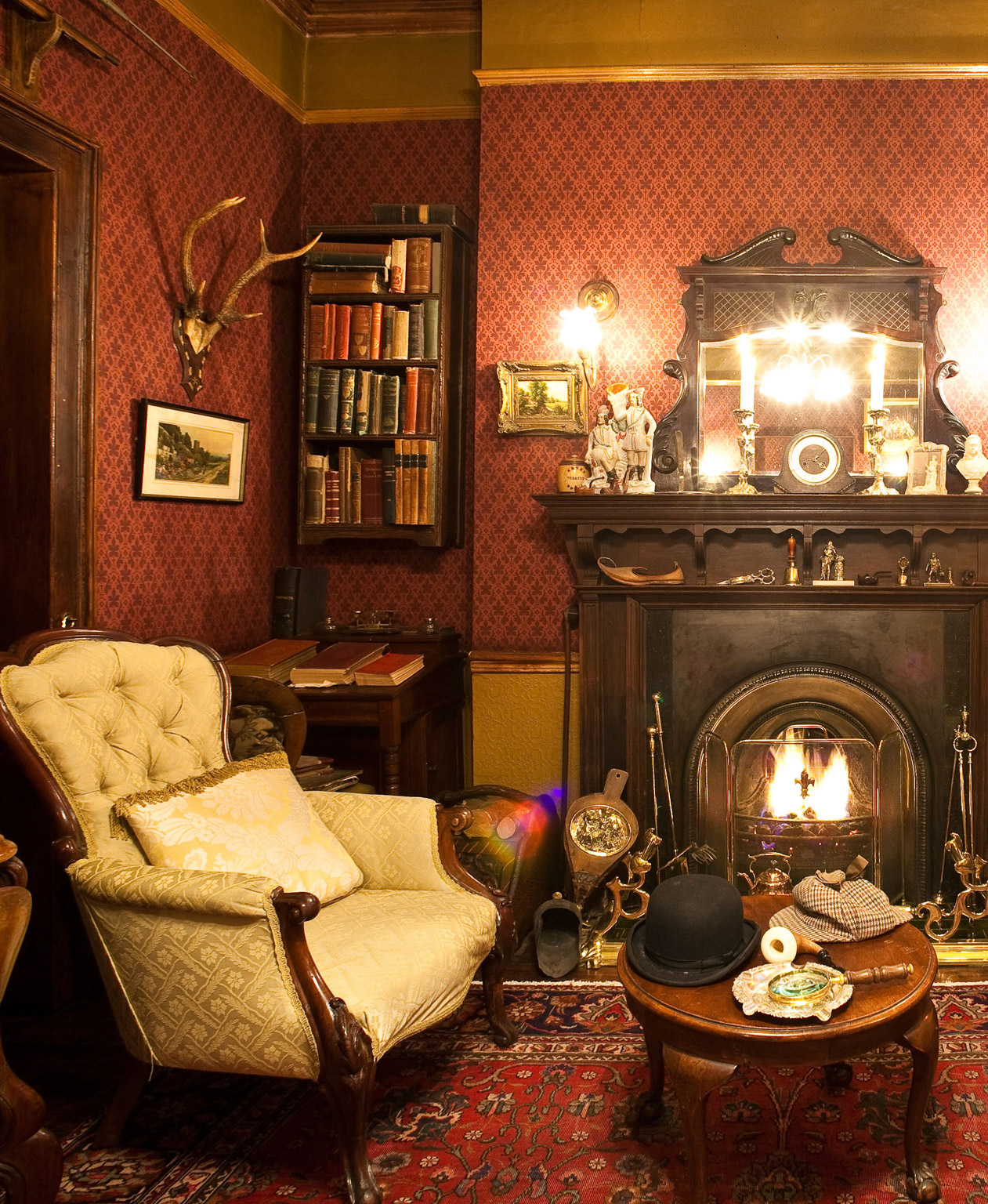
Dr. John Watson is the narrator of all but four of the Sherlock Holmes tales. He is the essential witness to Holmes’s brilliance, and the tireless biographer who records the detective’s deeds and conveys them to the public in his memoirs. Holmes acknowledges Watson’s considerable skills as a chronicler in the short story “A Scandal in Bohemia”, when he urges Watson to stay and meet his new client, saying “I am lost without my Boswell.” This likening of Watson to James Boswell (1740–1795), the highly acclaimed biographer of Dr. Samuel Johnson, diarist, and lawyer, is an accolade indeed.
A key figure
Watson is a simple but ingenious literary device. With Watson addressing the reader directly, the narrative becomes immediate and engaging. He explains what is going on and the reader identifies with him, following his ups and downs as he witnesses Holmes in action, and experiences bafflement and wonder. And since Holmes’s arrival at the truth generally takes Watson by surprise, the reader also feels the thrill of discovery when the time comes for Holmes to reveal it.
But Watson is so much more than a mere observer. He is the warm-hearted and good-humored everyman to Holmes’s cool and high-flown pragmatist. In an early version of A Study in Scarlet, Conan Doyle gave Holmes a partner named Ormond Sacker before settling on the more down-to-earth name of John H Watson. Watson is loyal, steadfast, and utterly dependable. Holmes is sometimes rude to him, and Watson, in turn, complains about the detective’s egotism, but, as Holmes asserts in The Hound of the Baskervilles, “there is no man better worth having at your side when you are in a tight place.”
In “The Adventure of Charles Augustus Milverton”, Lestrade describes his suspect as “a middle-sized, strongly built man—square jaw, thick neck, moustache,” and Holmes replies that this sounds like Watson, as indeed it is. Watson is an army-trained crack shot and was once athletic, playing for the famous Blackheath Rugby Club. But he also has a war injury and a taste for wine and tobacco.
Watson’s past
In A Study in Scarlet, the reader learns that Watson qualified as a medical doctor at St. Bartholomew’s Hospital in London in 1878, suggesting he was born around 1853. After qualifying, he signed up as an army surgeon with the 5th Northumberland Fusiliers and was posted to the Second Afghan War, where he was shot at the Battle of Maiwand in July 1880, in the arm or the leg—the narratives are confusing on this detail. While recovering in the hospital, he became ill with typhoid and was sent home with his health “irretrievably ruined”, and was discharged from the army with a meager pension.
With apparently no family to turn to, Watson was left adrift in London. It was at this low point that Stamford, Watson’s old friend from medical school, introduced him to Sherlock Holmes, who was looking for someone to share his lodgings at 221B Baker Street.
Thereafter, much of Watson’s life revolved around Holmes and his escapades. At some point, however, Watson moved out of 221B and became a successful medical practitioner. Holmes has such respect for Watson’s medical expertise that he keeps him at a distance to stop him from seeing through his feigned illness in “The Adventure of the Dying Detective”.
"Good old Watson! You are the one fixed point in a changing age."
Sherlock Holmes
Personal relationships
Watson’s marital status is difficult to establish. The reader learns that he marries Mary Morstan, the young woman who seeks Holmes’s help in The Sign of Four, yet in “The Adventure of the Empty House” it seems she has died. However, in some later tales, Watson has a wife, and Holmesians have often speculated on her identity. Fans are also intrigued by Watson’s assertion that he has “an experience of women which extends over many nations and three separate continents,” although given that he is comparing them to Mary when he first meets her, this is probably just the hyperbole of a man in love.
Watson is sometimes portrayed as dull-witted. Even Conan Doyle once called him Holmes’s “rather stupid friend.” However, while he may lag behind in brains, he more than makes up for it in reliability and integrity. Watson is Holmes’s rock and only friend, and Holmes makes very clear in “The Dying Detective” just how much Watson means to him: “You won’t fail me,” he says, “You never did fail me.”

Confidante and companion, Watson (left) talks with Holmes in “The Stockbroker’s Clerk.” The illustration is by Sidney Paget from the March 1893 edition of The Strand Magazine.
THE BAKER STREET HOUSEHOLD

Holmes and Watson rent their Baker Street rooms from the long-suffering landlady, Mrs. Hudson. Although she appears only briefly throughout the canon, her affection for the two men is unmistakable. Not only does she put up with Holmes conducting chemical experiments, firing a gun indoors, and taking drugs, she also answers the door at all hours to a string of miscellaneous visitors.
221B Baker Street is a suite of rooms on the second and third floors of the house, with the sitting room on the second floor, overlooking the street, and Holmes’s bedroom at the back; Watson’s room is on the floor above, looking out over the rear yard. In fact, the address never actually existed; at the time, Baker Street ended at number 83. The house that is now home to the Sherlock Holmes Museum was then in Upper Baker Street, although it is very similar to the description in the stories. In 1990, it was officially given the number 221B.
